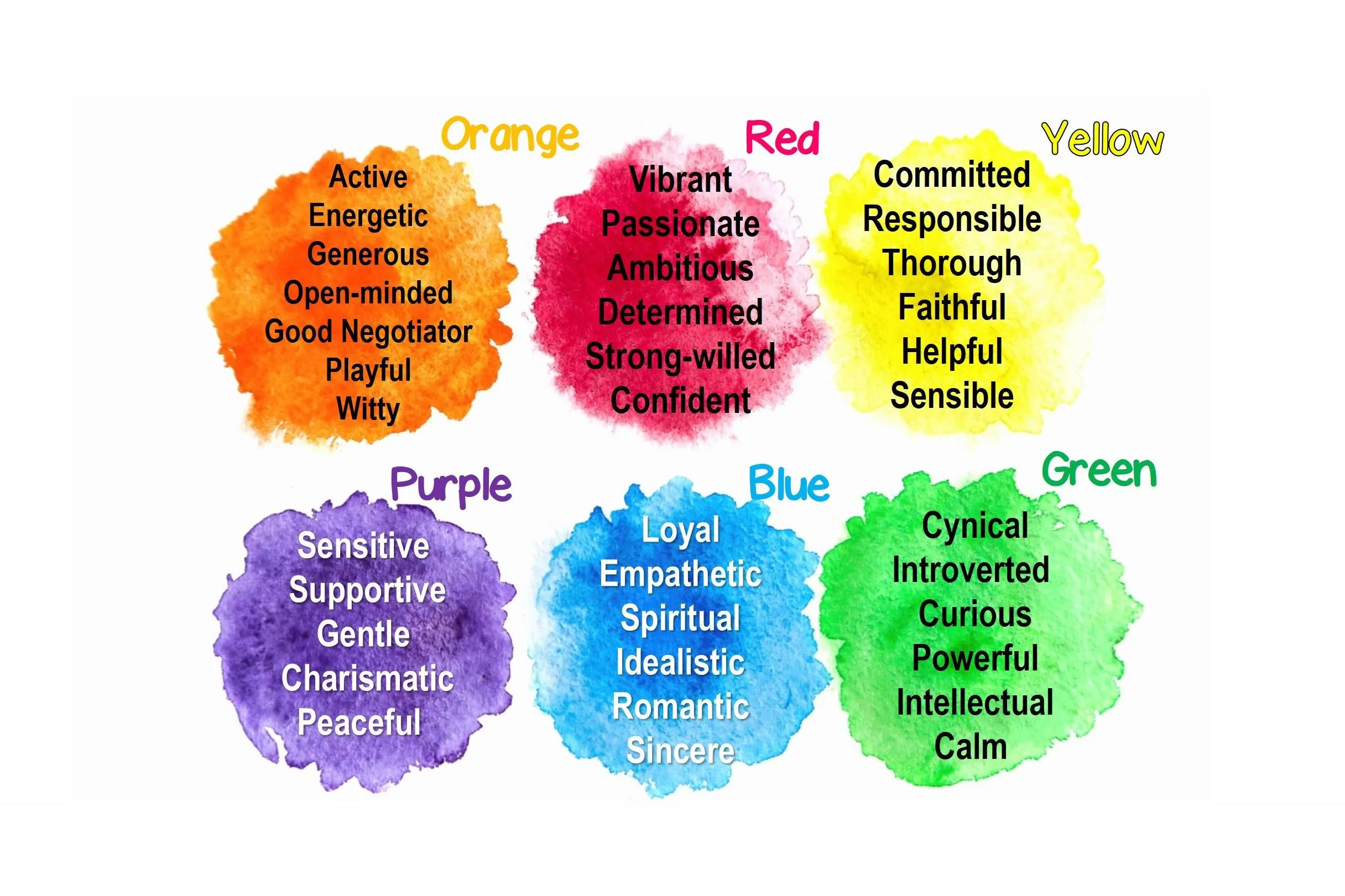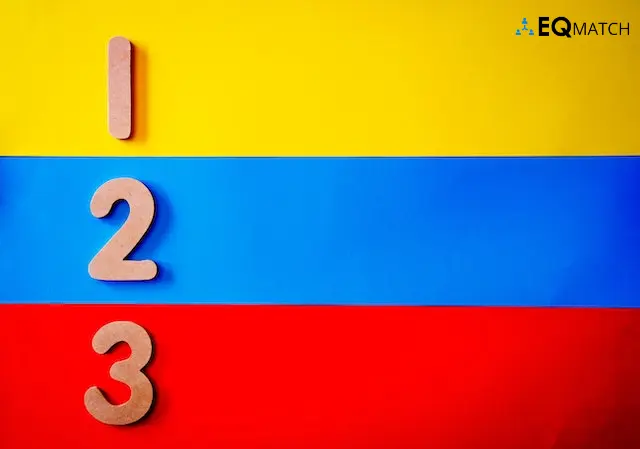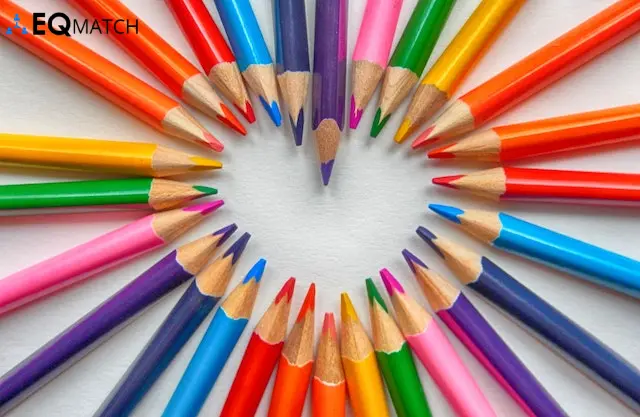Someone said it right- Colors are the smiles of nature.
A personality color test is a tool that helps us understand our personality traits, behaviors, and tendencies by associating them with different colors.
The test is based on the idea that colors have specific meanings that can be used to interpret personality traits. Personality color tests are becoming increasingly popular in the workplace because they can help HR decision-makers and managers better understand their employees and create more effective teams.
The history of personality color tests can be traced back to ancient times when color was used to identify personality traits.
In modern times, Carl Jung is credited with popularizing the concept of personality color tests. He believed that colors had a symbolic meaning that could be used to interpret personality traits.
Taking a personality color test can have several benefits. We can understand their strengths and weaknesses, which can help us make better career decisions.
Secondly, it can help us improve our communication and interpersonal skills by identifying the communication styles of others. Lastly, it can help us build stronger relationships with our colleagues and create a more harmonious work environment.
Keep reading to learn more about personality color tests and how they can be used in the workplace.
What is a Personality Color Test?
A personality color test is a type of psychological test that assigns different colors to different personality traits and tendencies. There are many different types of personality color tests available, each with its own unique set of questions and color assignments.
The Color Code Personality Test, the True Colors Personality Test, and the Myers-Briggs Type Indicator are the most popular personality color tests.
The science behind personality testing using colors is based on the idea that colors have a symbolic meaning that can be used to interpret personality traits.
For example, the color red is often associated with passion, excitement, and high energy. Similarly, blue is linked to calmness, intelligence, and trustworthiness. By assigning colors to different personality traits and tendencies, psychologists can help individuals better understand themselves and others.
Over time, personality color tests have evolved to become more sophisticated and accurate. Modern personality color tests use complex algorithms and statistical models to provide more accurate and personalized results.
These tests also consider a wider range of personality traits and tendencies, allowing test takers to gain a more comprehensive understanding of their personality.

Source: Playbuzz
Personality Color Test Meanings
Personality color tests typically use a set of colors to represent different personality traits and tendencies. Here are some of the most common colors used in personality color tests and their corresponding meanings:
Red represents passion, excitement, and high energy. Individuals who exhibit this color tend to be confident, outgoing, and competitive. Generally speaking, entrepreneurs, athletes, and public speakers fall into this category.
Blue represents calmness, intelligence, and trustworthiness. Individuals who exhibit this color tend to be analytical, logical, and detail-oriented. Examples of individuals who exhibit this color include scientists, engineers, and accountants.
Yellow represents optimism, creativity, and enthusiasm. Individuals who exhibit this color tend to be imaginative, expressive, and spontaneous. Examples include artists, musicians, and writers.
Green represents stability, balance, and harmony. Individuals who exhibit this color tend to be empathetic, compassionate, and nurturing. Nurses, social workers, and therapists generally exhibit this color.
Orange represents fun, excitement, and adventure. Individuals who exhibit this color tend to be adventurous, spontaneous, and daring. This is why sports enthusiasts, travel bloggers, and event planners exhibit this color.
These colors are used to represent different personality traits and tendencies based on the science behind color symbolism. By understanding the different colors and their meanings, one can gain a better understanding of themselves and others.

Free Personality Color Test Online
If you’re interested in taking a free personality color test, there are several great options available online. Here are some of the best free personality color tests.
Color Code Personality Test
This test assigns four colors (red, blue, white, and yellow) to different personality traits and tendencies. It takes about 10 minutes to complete and provides a detailed report of your personality.
True Colors Personality Test
This test assigns four colors (blue, gold, green, and orange) to different personality traits and tendencies. Expect to spend around 15 minutes on this test. The test provides a personalized report of your personality.
16Personalities
This test assigns four letters (INTJ, ENTP, etc.) to different personality types. It takes about 12 minutes to complete and provides a detailed report of your personality type.
Other personality color tests include Hartman’s personality test, Lüscher color test, and the Color Code Personality Assessment.
How to take these tests?
Most tests come with a set of instructions. Make sure you follow the instructions provided.
Expect to answer a series of questions about your personality, behavior, and tendencies. After you finish the test, you should get a report with insights into your personality and how you interact with others.
A word of caution when interpreting and using the results of a personality color test. These tests are not 100% accurate. Hence, one should use these as a general guide rather than a definitive assessment of your personality.

Personality Color Test in the Workplace
The Benefits of Using Personality Color Test in the Workplace
Personality color tests can be useful in recruitment, training, and career development. By understanding an individual’s personality type, HR decision-makers can better match job candidates to the right roles, provide tailored training and development opportunities, and create more effective career paths.
This can lead to better teamwork and collaboration in the workplace. When team members understand each other’s personalities and communication styles, they can work together more effectively and minimize misunderstandings and conflicts.
By creating teams with diverse personality types, organizations can tap into a wider range of perspectives, creativity, and problem-solving skills. Finally, tailoring management styles to different personality types is essential for effective leadership.
Different personality types respond differently to different management styles.
For example, people who exhibit the blue personality color may prefer a structured, detail-oriented management style. And those who exhibit the orange personality color may prefer a more flexible, creative management style.
By understanding and adapting to these different preferences, managers can create a more productive, engaged, and satisfied workforce.
Corporate personality testing can be a valuable tool for Human Resource decision-makers looking to improve recruiting, training, career development, teamwork, and leadership in the workplace.
Best Practices for Using Personality Color Tests in the Workplace
When introducing personality color tests in the workplace, HR decision-makers should take the following steps:
Choose a reputable test
Research and select a personality color test that is reliable, valid, and relevant to the workplace.
Obtain employee consent
Explain the purpose of the test, obtain employee consent, and ensure that the test results are kept confidential.
Administer the test
Provide clear instructions on how to take the test and ensure that employees have adequate time to complete it.
Interpret the results
Review the test results and provide employees with personalized feedback on their personality types and how they can use this information to improve communication, teamwork, and career development.
Integrate the results
Encourage employees to use their personality type information in their daily work and interactions with others.
When communicating the results of the test to employees, it’s important to be sensitive and respectful. Avoid using labels or stereotypes and emphasize the positive aspects of each personality type. Provide guidance on how employees can leverage their strengths and manage their weaknesses.
Potential pitfalls of personality color tests include stereotyping, labeling, and misunderstanding of the results.
Emotional Intelligence Tests vs Personality Color Tests
Emotional Intelligence tests and Personality Color tests are two different types of assessments that measure different aspects of an individual’s traits and abilities.
Emotional Intelligence assessments measure one’s ability to perceive, understand, and manage their own emotions, as well as their ability to recognize and respond to the emotions of others.
Personality color tests, on the other hand, measure one’s personality traits and characteristics.
Such tests typically assign colors or other symbols to different personality types and provide insights into an individual’s strengths, weaknesses, and behavioral tendencies.
While both types of assessments can be useful tools for self-awareness and personal development, EQ (or EI) tests are generally considered to be more valuable in the workplace and other professional settings.
There is a strong correlation between emotional intelligence and job performance, leadership ability, and other important aspects of professional success.
Note that emotional intelligence is a dynamic and trainable skill, whereas personality traits are thought to be relatively stable throughout an individual’s life.
Conclusion
Personality color tests can be a valuable tool for HR decision-makers looking to improve recruitment, training, career development, teamwork, and leadership in the workplace.
By understanding an individual’s personality type, organizations can create more effective teams, tailor management styles to different personalities, and improve overall workplace communication and collaboration.
It’s important to choose a reputable test, obtain employee consent, and ensure that the results are communicated in a sensitive and respectful manner.
Frequently Asked Questions (FAQs)
Here are the most common questions related to personality color tests.
What is the most accurate free personality color test available online?
The most accurate free personality color test available online may vary depending on individual preferences and needs.
How do I interpret my personality color test results?
To interpret your personality color test results, you should read and understand the meanings of each color and how they relate to your personality traits.
How can I use the personality color test results to improve my career?
You can use personality color test results to improve your career by identifying your strengths and weaknesses and finding career paths that align with your personality type.
What are the 4 personality colors?
The four personality colors are blue, green, gold, and orange.
What is the color personality test?
The color personality test is a type of assessment that uses colors to represent different personality traits.
What is the most accurate color personality test?
The accuracy of color personality tests can vary, so it’s important to choose a reputable test.
What is the 4 color personality test called?
The 4 color personality test is commonly known as the “True Colors” test.
What are the 6 emotions of colors?
The six emotions of colors are happiness, sadness, anger, fear, surprise, and disgust.
What are the colors of intelligence?
There are no specific colors of intelligence, as intelligence is not related to color.
What color is the most powerful?
Red is often considered the most powerful color due to its association with strength, energy, and passion.
What color are geniuses?
There is no scientific evidence to suggest that a specific color is associated with genius-level intelligence.
What is the true color of love?
The true color of love is subjective and varies depending on cultural and personal associations.
What is a green personality?
A green personality is typically associated with individuals who are analytical, logical, and focused on details.
What are the 4 leadership colors?
The four leadership colors are blue, green, gold, and orange. Each color represents different leadership styles and traits.
What is a blue personality?
A blue personality is typically associated with individuals who are empathetic, caring, and compassionate.
What is a purple personality type?
A purple personality type is not commonly used in personality color tests. However, purple is often associated with creativity, spirituality, and imagination.
What color represents introvert?
There is no specific color that represents introverts. Introversion is a personality trait that is not related to color.
What each color means emotionally?
Each color can have different emotional associations. For example, red is often associated with passion and anger. And blue could be linked with calmness and trustworthiness.



No responses yet